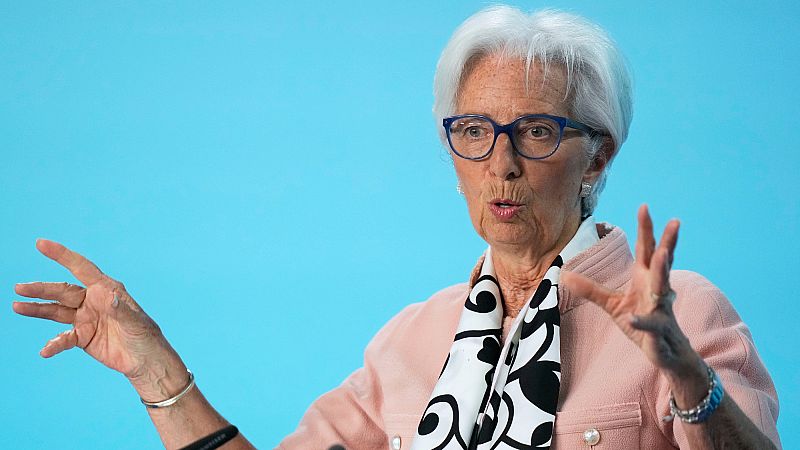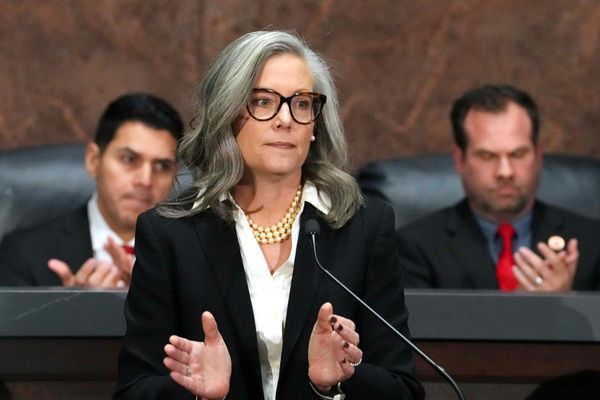
The European Central Bank (ECB) is expected to continue lowering interest rates in the coming months, as a dovish policy stance takes hold amid slowing growth and intensifying global trade tensions — according to a wide string of economists.
The consensus among experts points to a further 75 basis points of easing over the next three ECB meetings, with the deposit rate falling to as low as 1.5% by September.
With Thursday’s 25-basis-point cut—the seventh reduction in less than a year—the ECB has brought its deposit facility rate down to 2.25%, the lowest level since January 2023.
While the move was widely expected, it is the tone of the Governing Council’s statement and the post-meeting press conference that has galvanised forecasts of further easing.
“The tone in the statement and press conference was dovish,” Jan-Paul van de Kerke, senior eurozone economist at ABN Amro, said. He added that the inclusion of downside risks such as "trade tensions", "deteriorating financial market sentiment", and "geopolitical tensions" showed policymakers are increasingly skewed toward prioritising growth support.
Although ECB President Christine Lagarde reiterated that decisions remain data-dependent and will follow a meeting-by-meeting approach, she acknowledged that before the latest spike in trade tensions, some Governing Council members had been leaning towards holding rates steady. The fact that the decision was ultimately unanimous underscores how quickly sentiment has shifted within the ECB's core leadership.
Money markets have adjusted swiftly to the ECB’s dovish posture. Overnight swaps — derivatives that traders use to bet on future interest rate moves — are now pricing in 66 basis points of cuts for the remainder of 2025, with 22 basis points expected as early as the June meeting.
How low will eurozone interest rates go?
The market’s attention has now turned to how deep this cutting cycle could go.
ING’s global head of macro Carsten Brzeski said Lagarde’s communication showed “an increased sense of urgency” in the face of both external and internal challenges, including slowing inflation and growing downside risks to growth.
“The main problem for the ECB will remain the exceptionally high level of uncertainty, with the risk of undershooting its inflation target increasing,” Brzeski said. ING forecasts the deposit rate falling to 1.75% by September.
Danske Bank analysts expect even deeper cuts. While they emphasise that incoming economic data — particularly on inflation and business activity — will guide near-term policy, the overall bias remains towards loosening.
“We continue to expect the ECB to deliver 25-basis-point cuts at the upcoming meetings, bringing the deposit rate to 1.50% by September 2025,” they said.
Notably, Danske believes even a couple of weak Purchasing Managers’ Index (PMI) prints in April or May could push the ECB toward faster easing, potentially delivering 50 basis points in June.
“Bearish and dovish mood almost everywhere — both in the words and actions of the Governing Council in Frankfurt,” said Gian Marco Salcioli, head of global markets strategy at Intesa Sanpaolo.
“Although the narrative remains ‘path-dependent’, a window is opening for the deposit rate to fall below 2%, following the cut to 2.25%,” he said.
The expert noted that while the decision itself came as no surprise, market reaction pushed yields lower, particularly at the short end of the curve. The German 2-year Schatz dropped to 1.68%, down six basis points and touching the exact same low seen three years ago, while the 10-year Bund fell to 2.47%.
Trade tensions cloud outlook
Although inflation in the services sector has started to ease in recent months, headline price pressures still remain above target, which makes the ECB’s dovish turn all the more complex.
It’s now the wider economic picture that has increasingly drawn the Governing Council’s focus.
Goldman Sachs economist Sven Jari Stehn described Thursday’s message as “mostly dovish” and pointed to officials’ growing concern about the eurozone’s fragile growth outlook.
“They noted a ‘marked’ decline in services inflation and stated that the impact of trade tensions on inflation was less than clear,” Stehn said.
Goldman forecasts a further 25-basis-point cut on 5 June, followed by reductions in July and September, bringing the deposit rate to 1.5%.
The bank also outlines a more aggressive easing scenario — with a 30% probability —where the ECB could cut faster. This would depend on an escalation in the global trade war, significantly weaker eurozone activity data, or a US recession prompting rapid rate cuts by the Federal Reserve.







